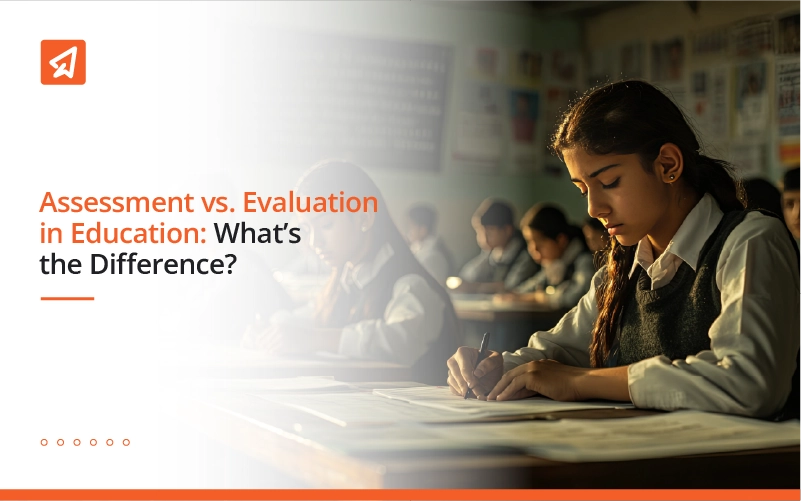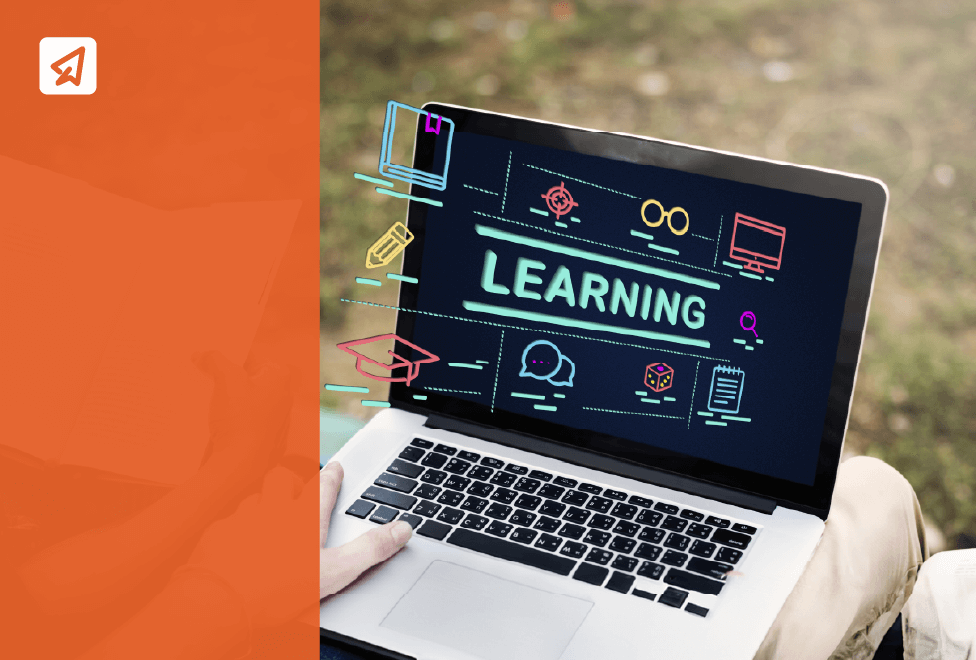Assessment vs. Evaluation in Education: What’s the Difference?

Imagine this. You spend weeks teaching a topic, using different activities to keep students engaged. Some seem to understand it quickly, while others struggle.
But how do you really know what they have understood? Do you check their progress along the way, or do you wait until the end to see their final results? This is where assessment and evaluation come in. Both help in understanding student learning, but they work in different ways.
In this blog, we are taking a closer look at what assessment and evaluation mean in education and how they help in shaping better learning experiences. Without waiting further, let’s get started.
What is Assessment?
Assessment helps teachers understand how well students are learning. It is not just about giving grades but also about checking progress, identifying learning gaps, and guiding students toward improvement. This can be done through tests, assignments, classroom observations, and even small tasks given as homework.
Grades may show how a student is performing overall, but they do not always explain where they are struggling. Assessments help break this down by showing which topics need more attention. Small, regular assessments in class give teachers a clearer picture of student understanding, making it easier to adjust lessons when needed.
Assessment also includes feedback that helps students understand what they are doing well and where they need to improve. When students receive clear guidance, they are more likely to stay engaged and take steps to strengthen their learning.
Teachers use assessment in different ways. The process involves setting learning goals, collecting information about student progress, and using that information to improve teaching methods. This ongoing process helps ensure that students are not just memorising information but actually understanding and applying what they learn.
What is Evaluation?
Evaluation helps teachers understand how well a lesson, program, or teaching method is working. It is a way to check if students are learning what they should and if any changes are needed to improve their progress.
By gathering information from different sources like classroom observations, student feedback, test results, and assignments, teachers get a clearer picture of what is working and what is not.
The goal of evaluation is to see if the learning objectives are being met. It also helps in making better decisions about teaching strategies, curriculum changes, or classroom activities.
By analysing the results, teachers can adjust their methods, provide extra support where needed, and create a more effective learning environment.
Also Read: Evaluation in Education: Why It Matters and How It Works
Key Differences Between Assessment and Evaluation
| Characteristic | Assessment | Evaluation |
| Focus | Looks at how well a student is learning by identifying strengths and areas that need improvement. | Examines data to determine how well a program, intervention, or system is working. |
| Nature | More of an ongoing process, offering continuous feedback to help improve learning. | Typically done at the end of a program or phase to make a final judgment on its success. |
| Common Methods Used | Includes tests, quizzes, projects, teacher observations, and informal discussions with students. | Uses surveys, performance tracking, observational studies, and statistical analysis. |
| How Often It Happens | Takes place regularly during the learning process. | Usually happens at important points, such as the end of a course, project, or program. |
| Main Purpose | Helps students improve by offering feedback on their learning progress. | Provides insights that guide decision-making for policies, curriculum changes, or program adjustments. |
| Who It Focuses On | Mainly concerned with individual students and their progress. | Focuses on broader educational programs, policies, or institutional performance. |
| Standards Used | Based on fixed standards, ensuring that essential learning outcomes are met. | Uses comparisons to determine which approaches or strategies are more effective. |
| Who Conducts It | Usually carried out by teachers or instructors. | Typically done by external reviewers, administrators, or specialised evaluation teams. |
How to Build E-Learning Assessments and Evaluations with Extramarks
Extramarks provides a range of tools that make it easier for teachers to design, manage, and analyse student assessments. Whether creating tests, tracking progress, or giving feedback, the platform helps streamline the entire process. Here’s how teachers can use Extramarks to improve assessments in their classrooms.
-
AI-Powered Question Paper Creation
Coming up with question papers can take a lot of time, but with Extramarks’ Assessment Centre, teachers can generate customised papers in minutes. The AI-powered system offers a large collection of questions across different subjects and grade levels, making it easy to set tests that match the syllabus and learning objectives.
-
Unique Assessments for Every Student
Cheating and unfair evaluations can be a concern during assessments. The “Power Questions” feature solves this by creating unique sets of questions for each student on the same topic. This ensures that every student gets a different version of the test while maintaining consistency in difficulty and learning objectives.
-
Instant Grading and Feedback
Checking answer sheets manually takes time, but Extramarks automates the process with AI-driven evaluation. Teachers can instantly assess tests, get accurate results, and provide detailed feedback without delays. Students also benefit from immediate responses, helping them understand their mistakes and work on improvement areas right away.
-
Performance Analysis with Smart Recommendations
Extramarks provides detailed insights into student performance. Teachers can track progress, identify weak areas, and get reports that highlight patterns in student learning. The system also offers personalised recommendations based on Bloom’s taxonomy, ensuring that students receive the right kind of support based on their needs.
-
Connecting Assessments with Learning Paths
Assessments are not just about grading students but also about guiding their learning. Extramarks links test results with personalised learning pathways, making sure students get the resources they need to strengthen their understanding. This way, assessments become a tool for growth rather than just a way to measure scores.
-
Flexibility with Online and Offline Assessments
Not all assessments need to be conducted online. Extramarks allows teachers to create question papers digitally while giving the option to print and distribute them for offline exams. This flexibility ensures that schools can use the platform in a way that suits their teaching style and student needs.
Ready to take your assessments to the next level?
Dive into Extramarks Assessment Centre for a game-changing experience! Personalised assessments, in-depth analytics, and a huge question bank await you. Step up your learning game – because at Extramarks, it’s not just about taking tests, it’s about mastering them and making your students reach new heights of excellence!
Learn MoreClosing Thoughts
Assessment and evaluation play different roles in education, but both help in understanding student progress and improving learning. While assessment focuses on ongoing feedback, evaluation looks at the bigger picture to refine teaching methods. Using the right balance of both ensures that students get the support they need to grow. With tools like Extramarks, teachers can make the process smoother and more insightful.
Last Updated on April 9, 2025
Reviewed by

Priya Kapoor | AVP - Academics
Priya Kapoor is an accomplished education professional with over 18 years of experience across diverse fields, including eLearning, digital and print publishing, instructional design, and content strategy. As the AVP – Academics at Extramarks, she leads academic teams in creating tailored educational solutions, ensuring alignment with varied curricula across national and international platforms...read more.










